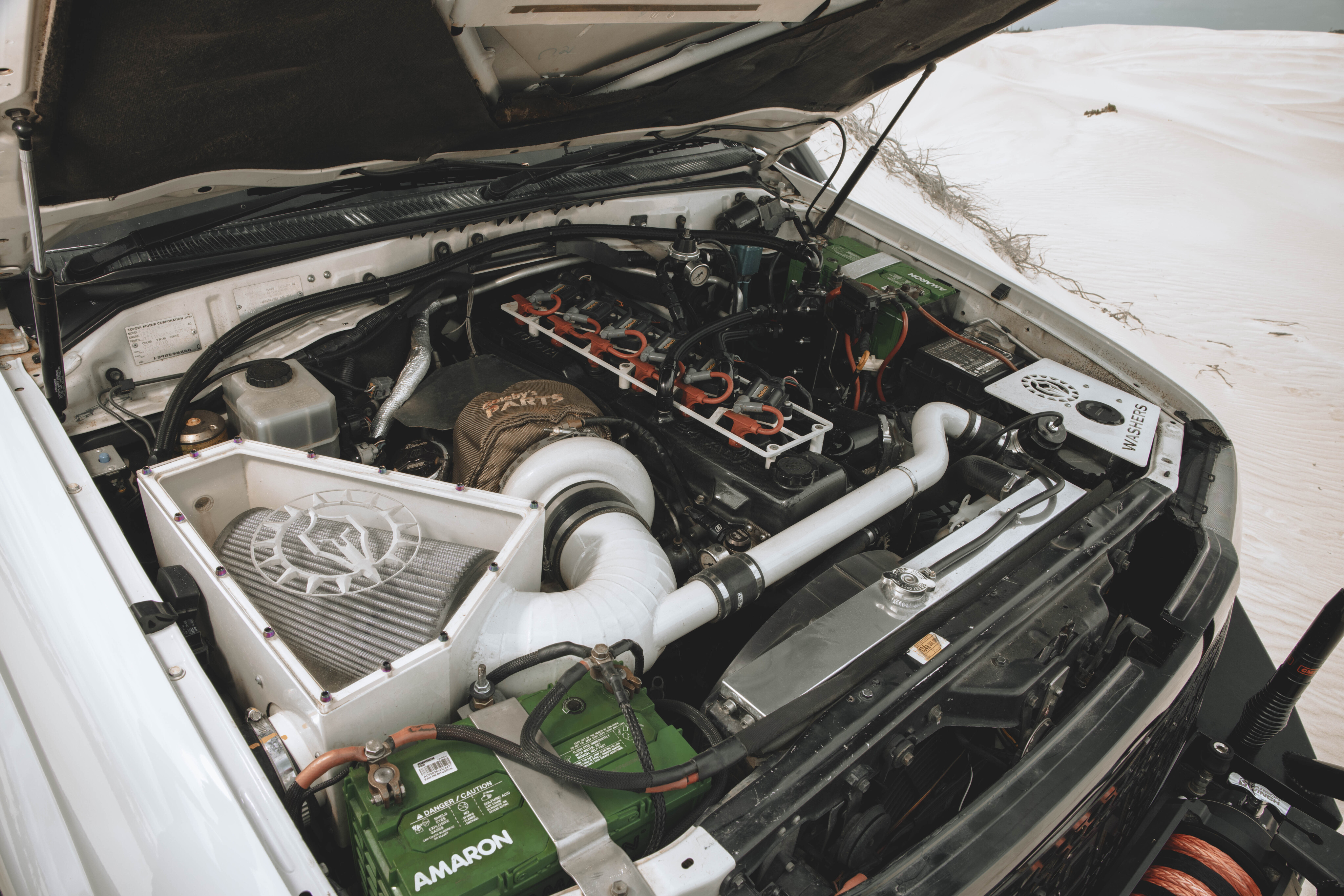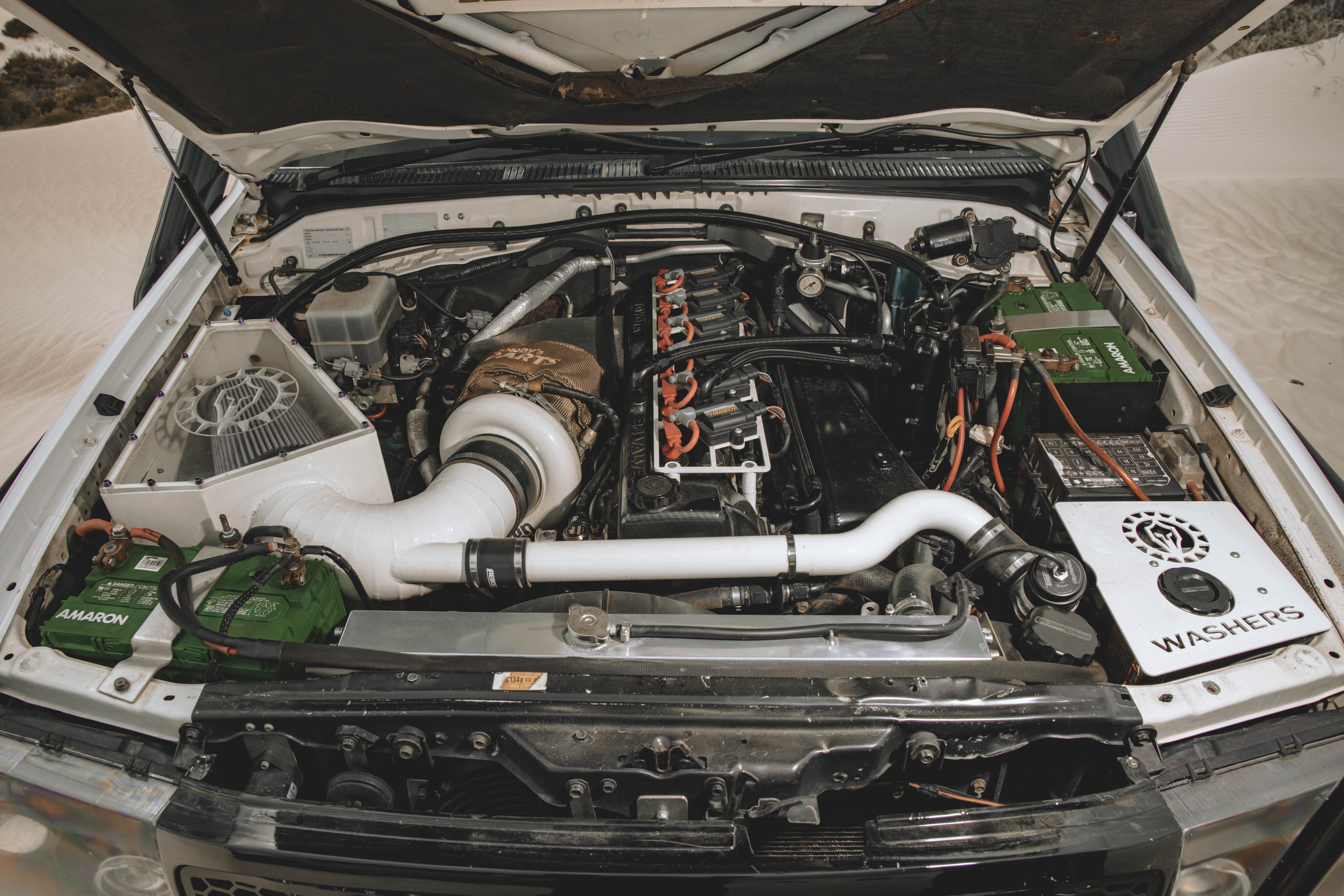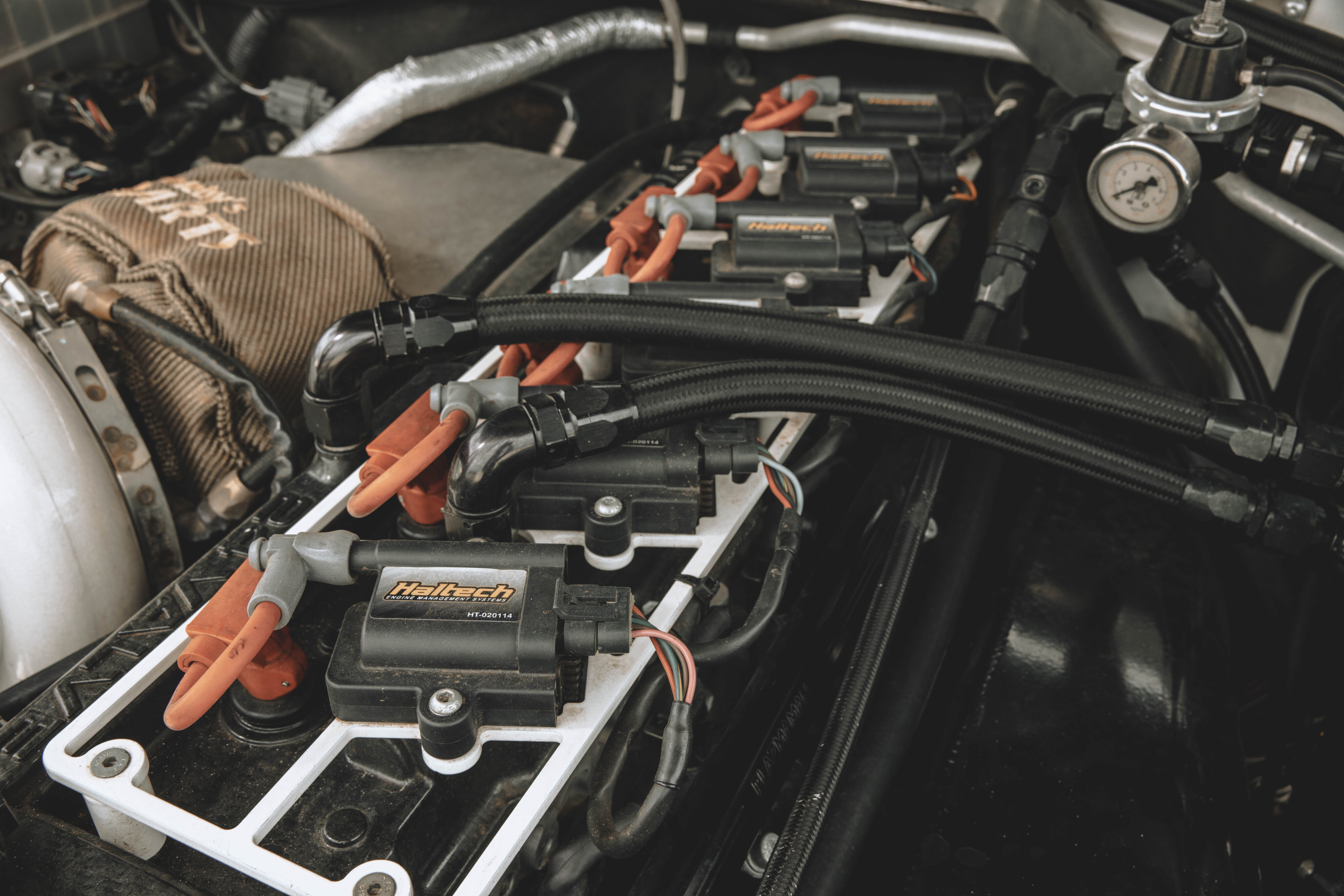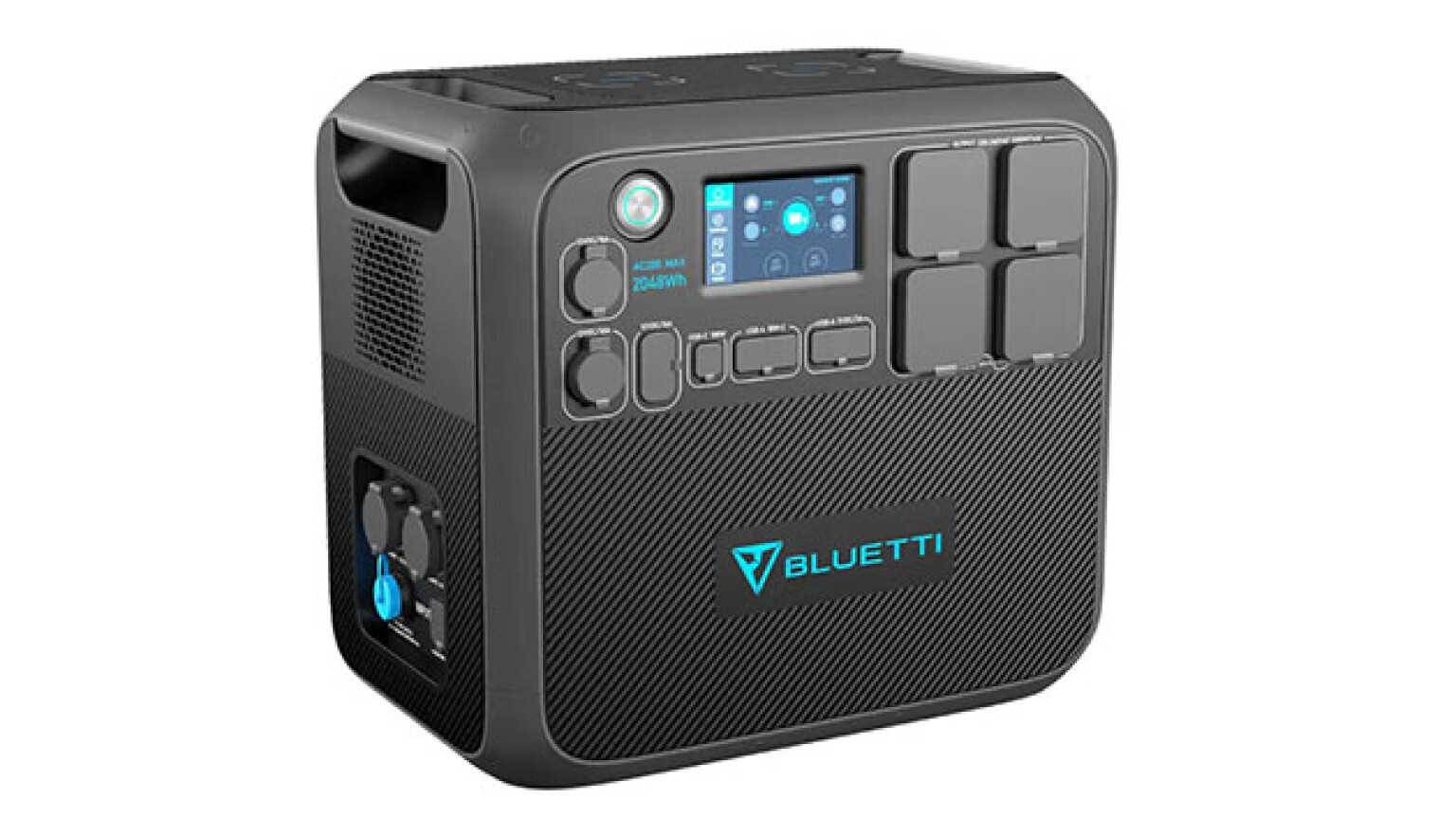
When it comes to LandCruisers and their many iterations, the LC105 is often listed near the top of the favourites list by Toyota stalwarts.
But it's quickly followed with the caveat that the naturally aspirated versions of either fuel variant would be flat out trying to pull the skin off a rice pudding.
It was somewhat baffling that the LC105 was only offered with either the 1FZ-FE 4.5-litre petrol six or 1HZ 4.2-litre diesel six, especially when you consider the the IFS LC100 was available at the same time with either the 4.7-litre 2UZFE petrol V8 or the equally impressive 4.2-litre 1HD-FTE turbo-diesel engine.

With its live axles front and rear and coil springs all around, the LC105 is better suited to heavy-duty off-road work than the IFS LC100, and it would have benefited greatly in the rough with a bit more power from those more potent powerplants.
Fast forward to today and adding boost to the LC105 is a common path taken for those wanting more power.
Ben describes his rig as, “a Dubai-spec LandCruiser, used for touring”
After playing with a Ford Ranger in diesel form, and finding limits not to his taste, Ben Sigle decided it was time to look at the high-horsepower petrol-powered side of the coin. “I realised pretty early on in the piece that petrol was more fun; more power but more expensive,” said Ben.
Built to achieve a dyno figure north of triple digits, Ben describes his rig as, “A Dubai-spec LandCruiser, used for touring.”

Shooting for such hefty numbers is bound to find the weak points in a driveline, with some head gasket and tuning issues partially stalling the ultimate 1FZ-FE DOHC stroker from achieving its best results so far.
Originally built by Anthony Geranis at Spartan Performance in WA, the list of parts reads like the back of a drag racer’s toolbox. Starting with the OEM block, a Nitto stroker kit nudges the capacity to 4.8-litres. This includes a 4340 billet steel crank, knife edged and nitrided, and connected to 4340 grade billet steel I-beam rods using ARP 2000 series bolts. Filling the 1mm wider 101mm bores are thick-walled forged T6 2816 low-silicon content alloy pistons.
Latest Gear Guides
Once complete the whole assembly was balanced to a lofty 8500rpm before being installed. Sealing the block is a brand new turbo-spec head running Ferrea valves and Brian Crower springs, with titanium retainers keeping valve-train weight down. After pumping in 28psi and lifting the head on the dyno, Ben has since refreshed the head gasket with a new Cometic item, plus ARP head studs.
While the Brian Crower cam specs are a secret, there’s Racing Crown adjustable gears keeping the camshafts exactly where they need to be, with an upgraded timing chain and ratchet adjuster maintaining precise timing with the crank.
Let loose the boost
Looking like it means business with its colour-coded compressor housing and extensive pipework is a Garret G42-1200 turbo that makes the 1FZ capable of producing 1200hp. Twin Turbosmart HyperGate45 wastegates are needed to reign-in boost creep at high levels, aided by a five-inch dump pipe into a four-inch single exhaust.

On the intake side is a Turbosmart Big Bubba BOV releasing excess boost to cut compressor surge once the throttle is closed. A Hypertune 100mm thick front-mounted aftercooler capable of supporting 1500hp keeps intake temps down, with the custom pipework held together by Plazmaman boost clamps.
Fuel to the fire
Making horsepower by dialling up huge amounts of boost is one thing, but that means nothing if there’s not enough fuel to quench the thirst.

To that end Anthony started with twin Walbro 465 fuel pumps and a Process West surge tank ensuring a steady supply of dinosaur juice was available when slaloming around the dunes. A Plazmaman fuel rail distributes to six 1650cc injectors, while fuel-rail pressure is kept in check by a Turbosmart FPR2000 regulator.
The task of igniting the massive fuel/air mix is allocated to Haltech coils set out across the rocker cover, on a custom colour-coded frame.
Automatic upgrades
Adding a little GM to the Toyota is a 4L80-E slushbox conversion. Built to handle 1500hp, it packs an upgraded main shaft and clutches, with the power fed through a custom-built torque converter with twin plate lock-up clutch that’s good for 1000hp.
Driving through sand can put the best ’boxes to the test heat-wise, so there’s a Tru-Cool 40K trans cooler with its own fan to keep temps in check. Monitored through the Haltech Nexus R5, the ’box runs a lower ratio first and second gear, with a B&M Stealth shifter to ratchet through gears with ease.

As to be expected it hasn’t been all plain-sailing, with Ben recalling, “I had a few gearbox issues while away on a trip down south. Little did I know that one small switch inside the ’box could cause so many problems, causing it to get stuck in second gear. Luckily I was able to get it in to see Josh at LSX Powertrain and he diagnosed the offending switch, and it’s been good ever since.”
Loaded in behind via a Marks 4WD adapter kit is a fully rebuilt transfer case running lower ratios. Marks 4WD also supplied the part-time kit for the front which uses Aisin hubs. Once all that power reaches the diffs, a combination of a front Spartan Performance mechanical locker and rear TJM Pro Locker, and new Terrain Tamer 4.3:1 gear-sets, ensure it gets to the ground.
Fit for a king
Keeping the big LC105 settled while surfing the dunes has largely been left to the offerings from Superior Engineering.
King Offroad three-inch lifted springs and adjustable remote reservoir shocks stop the bucking, and a set of hydro-bumps soften big landings for both drivetrain and occupants.

But there’s only so much they can achieve, laughs Ben, “I have had some interesting moments with the front diff. I went to the dunes and jumped it too far, and bent it. So we changed it out in the driveway, putting in a new housing with Superior bracing welded on.”
Getting more flex out of the upgraded front axle are Superior Engineering Hyperflex arms, complimented by the company’s trailing arms in the rear. It’s worth noting both front and rear swaybars have been retained for better on-road manners, albeit using Superior billet spacers to maintain correct geometry with the lifted suspension.
A great place to be
Taking a look inside reveals an updated interior sporting reshaped leather-clad diamond-stitched seats and an upgraded Camry Sportivo steering wheel.
Replacing the OEM cluster is the all-seeing Haltech iC-7 dash, plus a touchscreen Pioneer head unit taking care of tunes. While all OEM switchgear is retained, the wiring to ancillaries like headlights and indicators now go through the Haltech R5.
Out the back, the Cruiser is loaded with gear for camping. PVP custom aluminium drawers are a perfect fit in the rear cargo space, and allow plenty of storage as well as a sturdy mount for the Dometic CFX fridge and slide-out table.

Side panels provide mounting for the Redarc BMS1230 display, Anderson plug power, and switchgear for auxiliary lighting, as well as to kick the twin-cylinder ARB compressor to life. Tucked away out-of-sight is a 135Ah AGM battery and Redarc 1000W pure sine wave inverter.
With the LandCruiser tuned to 20psi of boost, it has seen a comfortable 670hp at the rear hubs
With the LandCruiser tuned to 20psi of boost, it has seen a comfortable 670hp at the rear hubs, but Ben is hoping an upcoming tune with a tankful of E85 will net around the 800hp mark, using 30psi of boost! But this will really just be to see what such a highly modded setup can achieve.
As Ben puts it, “People ask me when I’m out on the dunes, do you turn this thing up? I’ve discovered less is more on the dunes, especially if you’re traveling long distances on a camping trip. It’s less to worry about and easier to control. I just turn it down to 15psi via the Haltech controller. There’s no need to run seven or eight hundred horsepower on the beach. That’s more for the drags, I think.”
Brains behind the brawn
Asking a management system to be across everything going on in an engine pushed as hard as this one was always going to require a top-end ECU , and in the case of Ben’s LC105 that is taken care of by the Haltech Nexus R5.
This flagship ECU is loaded with features like traction control, launch control, and closed-loop boost control. Haltech has even seen fit to include the ability to control shock travel and ride height, should it be available.
While R5 manages the traditional aspects of the engine like injectors, crank trigger, coils, sensors etc., there’s also provision for up to four 25A outputs using solid-state relays to directly wire-in high-current-load items like thermo fans, fuel pumps, or a transbrake, all without the need to go through switching relays or fuses. In fact, the R5 will retry a blown connection as many times as you programme it to before displaying a fault code on its dash mounted iC-7 screen.

The R5 can also provide a soft-start to ramp up large initial current draws like thermo fans or race-spec fuel pumps. Up to 12 low-current outputs are available with the option to expand if more are needed. Combined with the CAN-bus controlled switch pad, it makes life easier when it comes time to find somewhere to put your switches, avoiding a Swiss cheese-like dash or complicated wiring behind it.
In Ben’s LC105, the R5 also handles all body functions like headlights, brake lights, indicators etc. If all that programmability wasn’t enough, Haltech has even seen fit to include automatic gearbox control, which includes the 4L80E transmission Ben’s LC105 runs.












COMMENTS